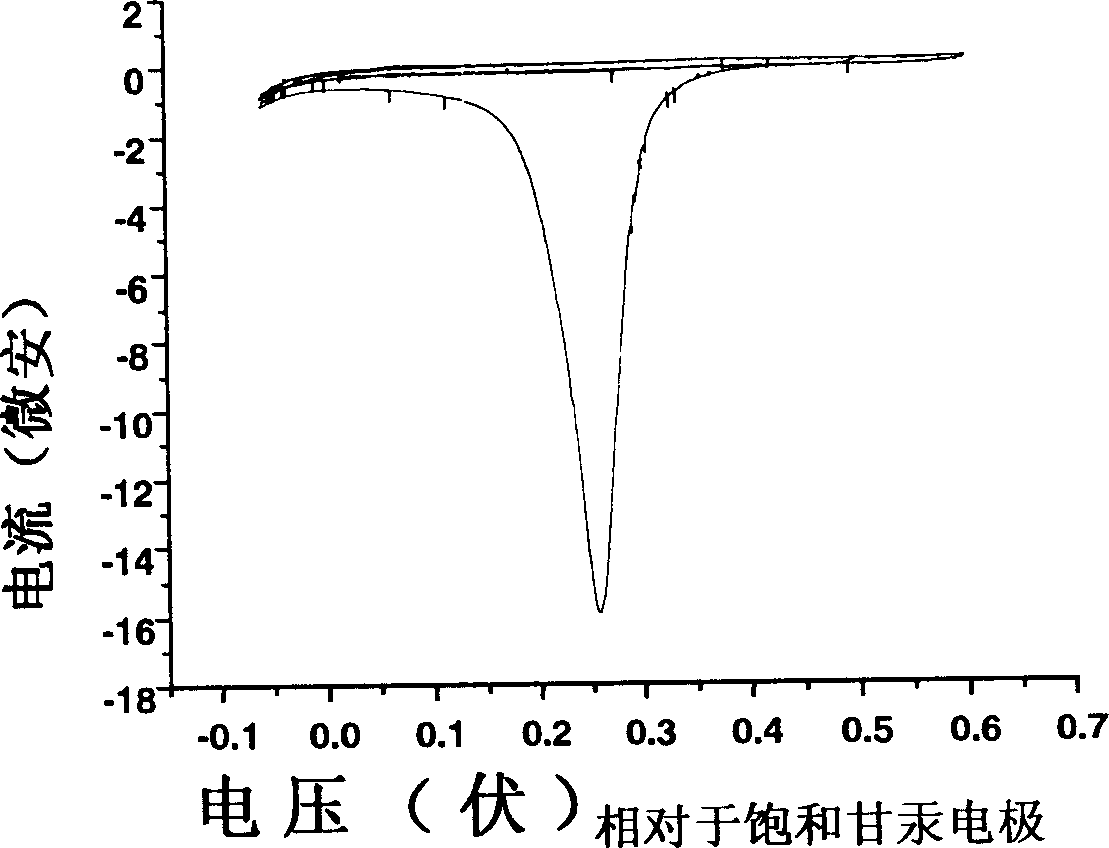Ultrathin electrode, diaphragm, ultrathin primary battery, ultrathin rechargeable cell and their production process
A battery, ultra-thin technology, applied in the direction of primary batteries, secondary batteries, active material electrodes, etc., can solve the problems of cumbersome processes, expensive production costs, and difficult to meet, and achieve broad application prospects, reduce production costs, and reduce thickness. Effect
- Summary
- Abstract
- Description
- Claims
- Application Information
AI Technical Summary
Problems solved by technology
Method used
Image
Examples
Embodiment 1
[0041] Mix 1 part of nano manganese dioxide powder with 5 parts of ethyl methyl carbonate, 0.05 part of polyvinyl difluoride, 0.005 part of surfactant polymethylsiloxane emulsion, 50 parts of acetone, 0.5 part of buffer ethanolamine and The mixture of 0.05 parts of zinc chloride and ammonium chloride was ultrasonically mixed for 5 minutes to obtain the ink for positive electrode printing of zinc-manganese batteries containing the active material manganese dioxide. The ink was injected into the ink-jet printer cartridge, and the paper was put in as the printing substrate. Using computer control, the designed electrodes can be printed on this substrate.
Embodiment 2
[0043] Mix 1 part of nano manganese dioxide powder with 200 parts of ethylene carbonate, 0.07 part of polymethyl methacrylate, 0.03 part of surfactant fatty acid polyoxyethylene ester, 200 parts of acetone, 10 parts of buffer trimethylamine and 0.05 part of chlorine The mixed solution of zinc oxide and carbon powder is ultrasonically mixed for 5 minutes to obtain the ink for positive electrode printing of zinc-manganese batteries containing the active material manganese dioxide. This ink is injected into the ink-jet printer cartridge, and the paper with vacuum-evaporated gold is placed as the printing substrate. Using computer control, the designed electrodes can be printed on this substrate.
Embodiment 3
[0045] Mix 1 part of nano-nickel hydroxide powder with 5 parts of propylene carbonate, 0.05 part of poly(1,1-difluoroethylene and hexafluoropropylene copolymer), 0.005 part of surfactant dialkyldimethylammonium chloride, 50 parts of acetone , 0.5 parts of buffering agent triethanolamine and 0.05 parts of potassium chloride and ammonium chloride were mixed ultrasonically for 5 minutes to obtain the ink for positive electrode printing of zinc-nickel batteries containing active material nickel hydroxide, and inject the ink into the ink cartridge of the inkjet printer , put the paper as the printing substrate, and use the computer control to print the designed electrodes on this substrate.
PUM
| Property | Measurement | Unit |
|---|---|---|
| thickness | aaaaa | aaaaa |
| thickness | aaaaa | aaaaa |
| thickness | aaaaa | aaaaa |
Abstract
Description
Claims
Application Information
 Login to View More
Login to View More - R&D
- Intellectual Property
- Life Sciences
- Materials
- Tech Scout
- Unparalleled Data Quality
- Higher Quality Content
- 60% Fewer Hallucinations
Browse by: Latest US Patents, China's latest patents, Technical Efficacy Thesaurus, Application Domain, Technology Topic, Popular Technical Reports.
© 2025 PatSnap. All rights reserved.Legal|Privacy policy|Modern Slavery Act Transparency Statement|Sitemap|About US| Contact US: help@patsnap.com



